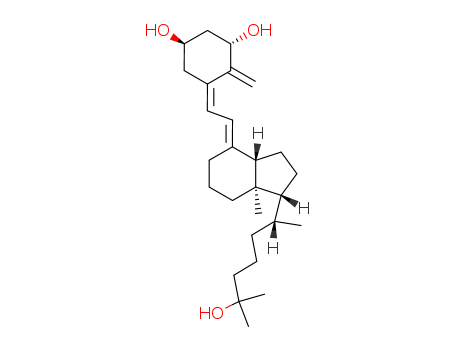- Chemical Name:1alpha,25-Dihydroxyvitamin D3
- CAS No.:32222-06-3
- Molecular Formula:C27H44O3
- Molecular Weight:416.645
- Hs Code.:29061900
- Mol file:32222-06-3.mol
Synonyms:Toptriol;Dihydroxyvitamin D3;DN 101;1.alpha.,25-dihydroxycholecalciferol;9,10-Secocholesta-5,7,10(19)-triene-1,3,25-triol, (1.alpha.,3.beta.,5Z,7E)-;GMRQFYUYWCNGIN-CLVAPQHMSA-N;1.alpha.,25-Dihydroxyvitamin D3;AKOS025401842;Cholecalciferol, 1.alpha.,25-dihydroxy-;(3.beta.,5Z,7E)-9,10-Secocholesta-5,7,10-triene-1,3,25-triol;(5Z,7E)-9,10-Secocholesta-5,7,10(19)-triene-1.alpha.,3.beta.,25-triol



 T+,
T+, Xn
Xn


